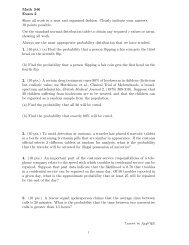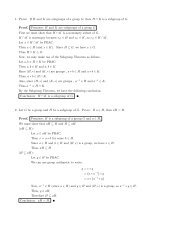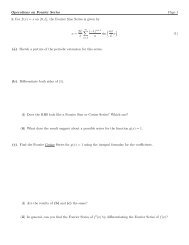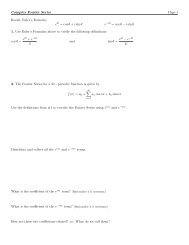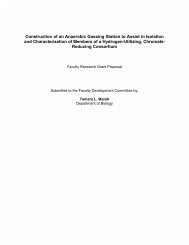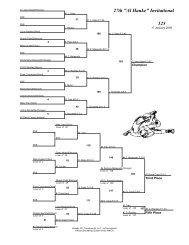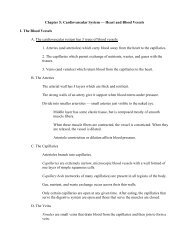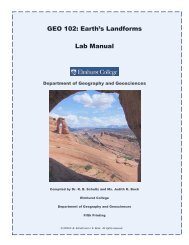Free Executive Summary - Elmhurst College
Free Executive Summary - Elmhurst College
Free Executive Summary - Elmhurst College
You also want an ePaper? Increase the reach of your titles
YUMPU automatically turns print PDFs into web optimized ePapers that Google loves.
Learning to Think Spatially: GIS as a Support System in the K-12 Curriculum<br />
http://www.nap.edu/catalog/11019.html<br />
SPATIAL THINKING IN EVERYDAY LIFE, AT WORK, AND IN SCIENCE 83<br />
properties, or processes. The next step involves mentally manipulating those shapes, structures,<br />
orientations or positions—for example, by rotation, translation, deformation, or partial removal.<br />
The third step involves making interpretations about what caused the objects, properties, or processes<br />
to have those particular shapes, structures, orientations, and/or positions. With this understanding<br />
in mind, it is possible to make predictions about the consequences or implications of the<br />
observed shapes, internal structures, orientations, and/or positions. Finally, geoscientists can use<br />
spatial thinking processes as a short-cut, metaphor, or mental crutch to think about processes or<br />
properties that are distributed across some dimension other than physical space.<br />
3.7 THINKING SPATIALLY IN GEOSCIENCE:<br />
THE SEAFLOOR MAPS OF MARIE THARP<br />
3.7.1 Introduction: Seafloor Mapping<br />
Marie Tharp (1920–) is a marine cartographer who made some of the first maps of the seafloor<br />
between the 1950s and the 1970s (Figure 3.28). With kilometers of water obscuring her direct<br />
vision, she was able to visualize and depict the shapes of terrain that no human eye had ever seen.<br />
FIGURE 3.28 Marie Tharp at her worktable at Lamont Geological Observatory in Palisades, New York,<br />
1961. She is seen with the Physiographic Diagram of the North Atlantic (1956), her six famous profiles of the<br />
Mid-Atlantic Ridge and Rift Valley, the “Physiographic Globe” by Dr. Bruce C. Heezen, and samples of PDR<br />
soundings. SOURCE: Photo taken by Nick Lazarnick.<br />
Copyright © National Academy of Sciences. All rights reserved.



